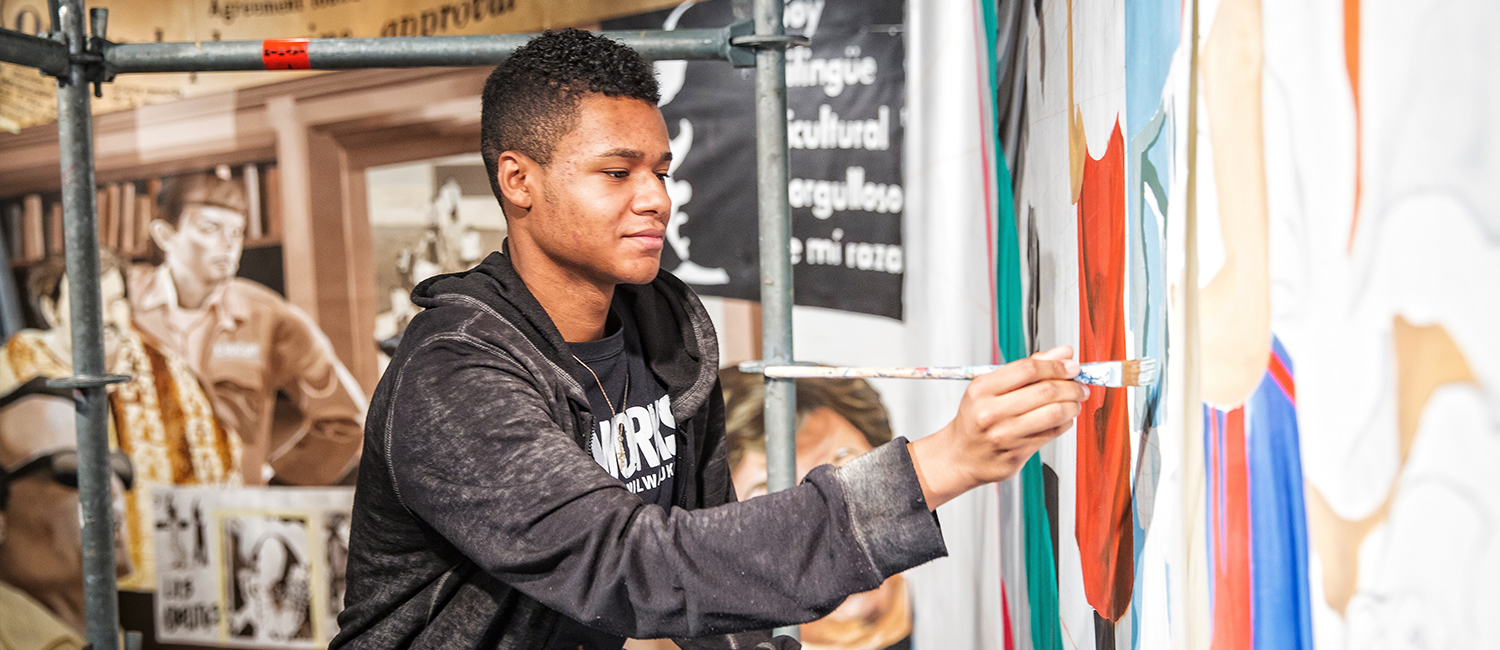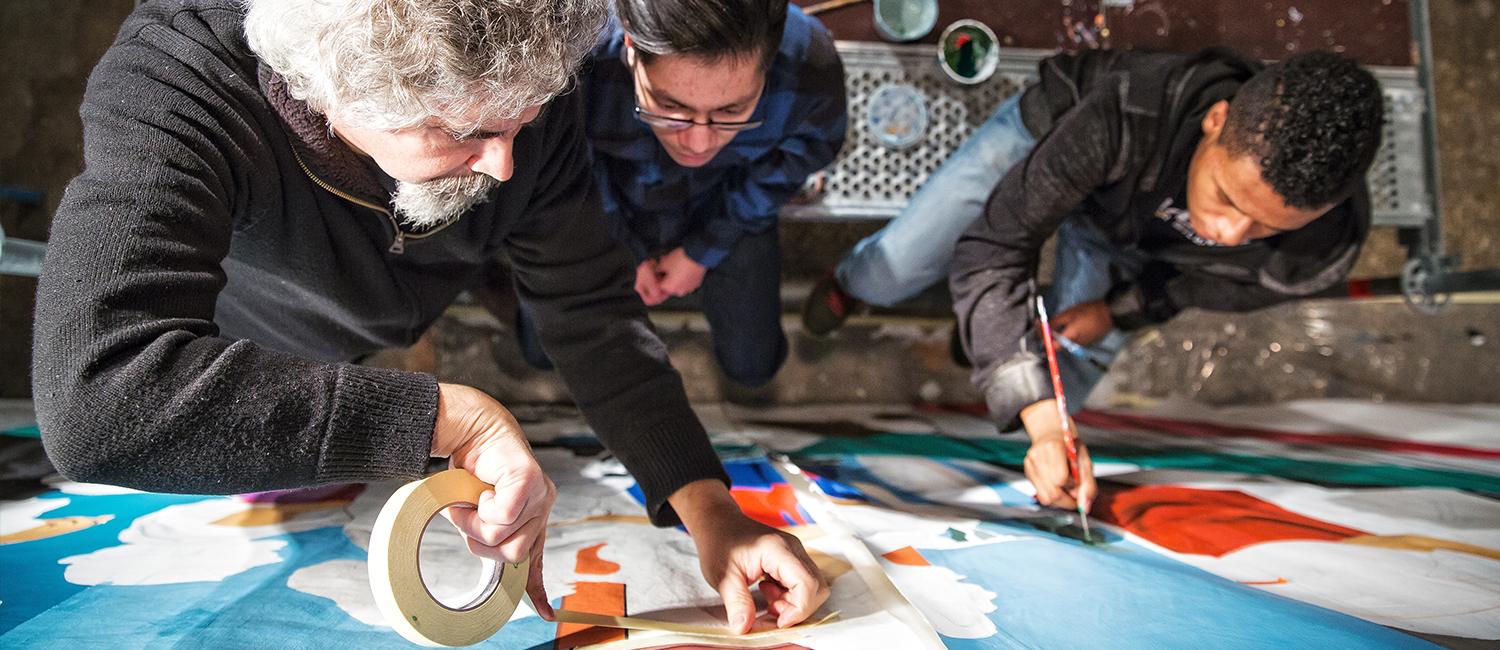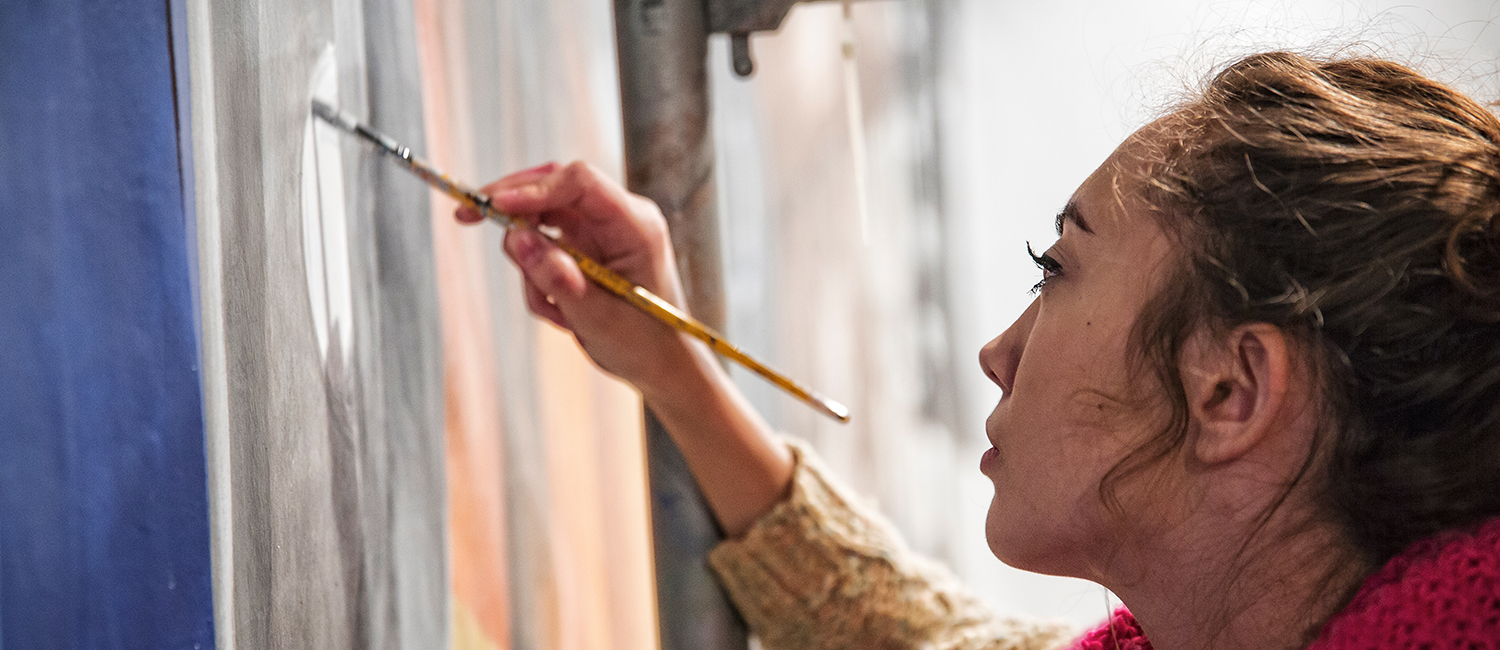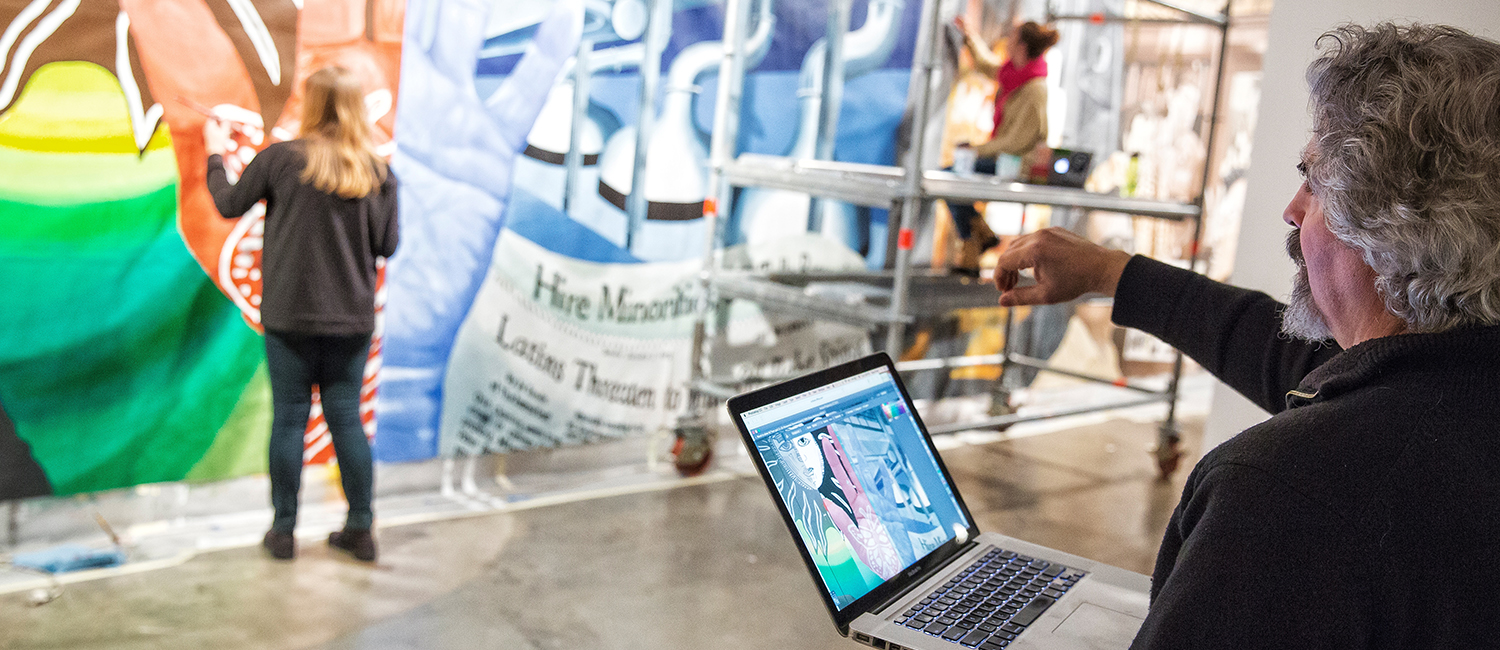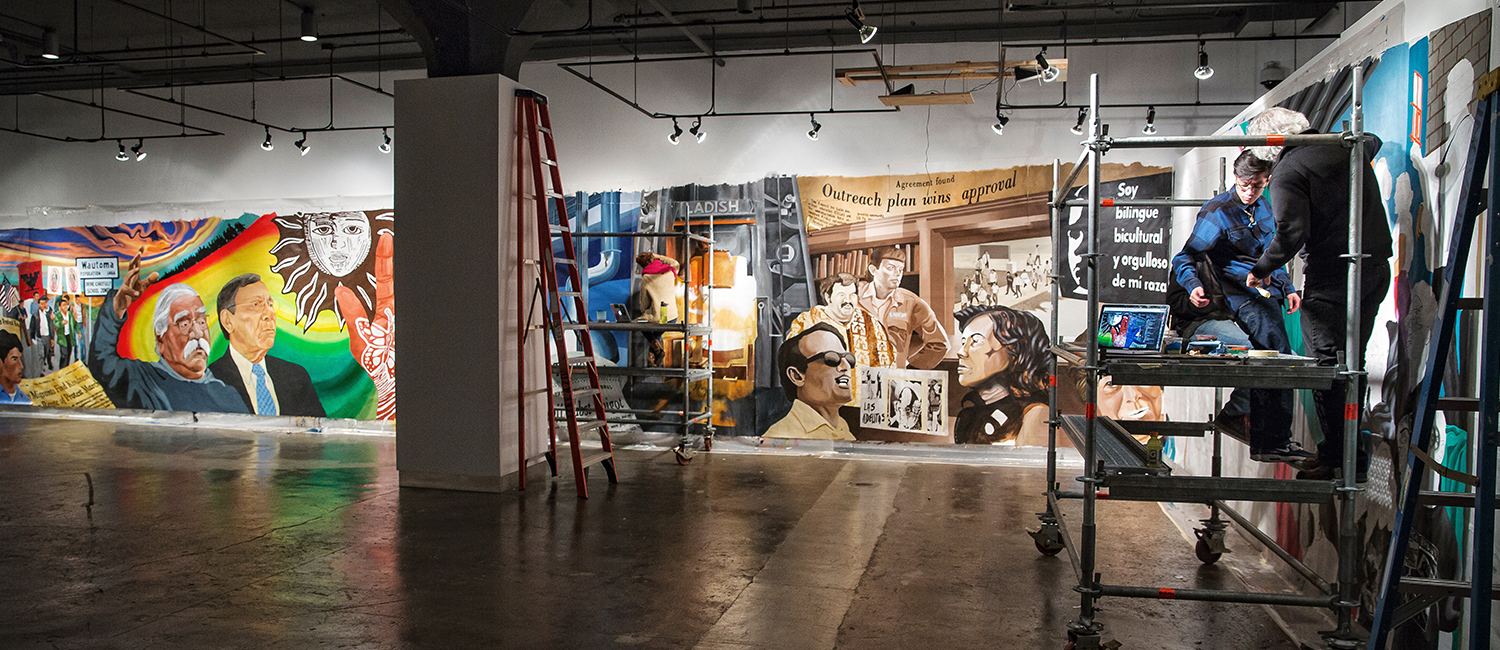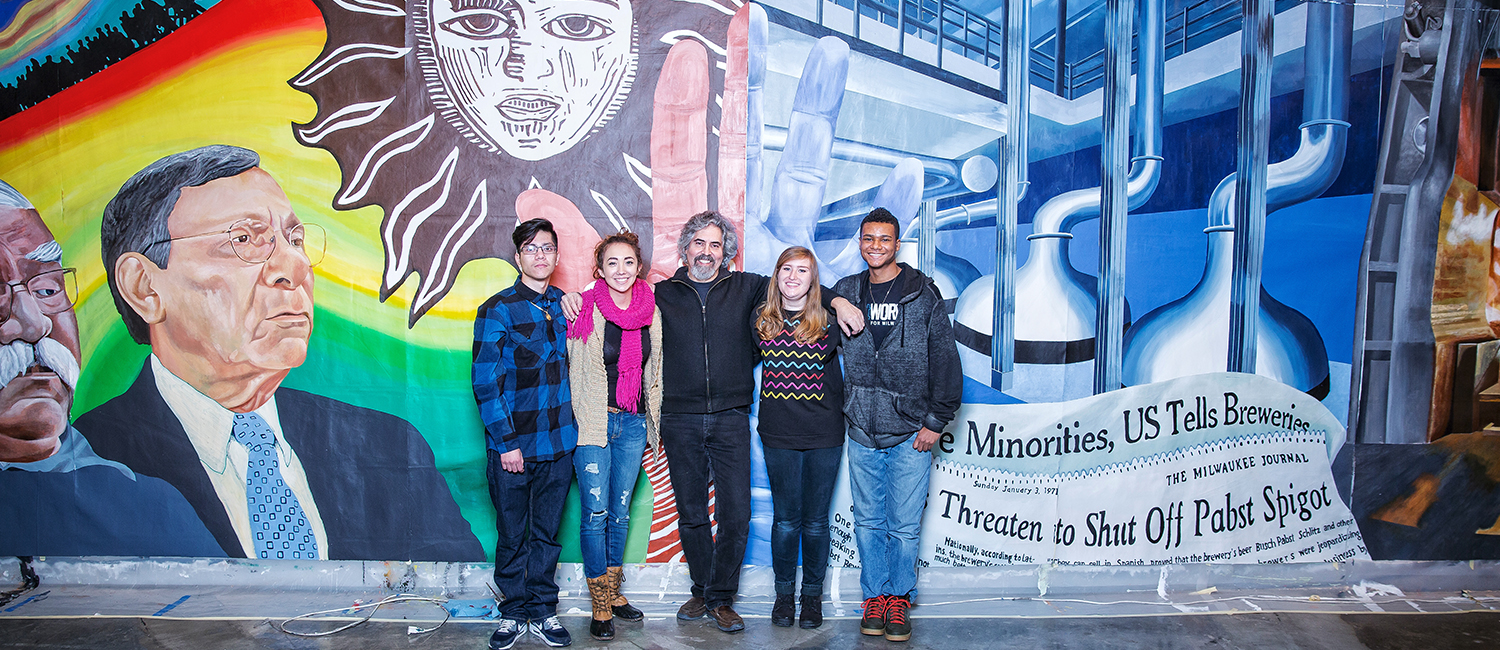Portrait of Milwaukee’s Latino History
UWM students help research, design and create a mural depicting a range of moments from past to present.
When she was an elementary and high school student, Isa Cortes never learned much about the history of Latinos in Milwaukee.
But at UWM, the sophomore community arts major and undergraduate research assistant immersed herself in such history. That was especially true when she helped design a mural celebrating the city’s Latinos. It measures 9 feet by 85 feet, and it’s scheduled for a spring 2017 installation in Milwaukee’s Walker’s Point neighborhood.
“I’ve really been learning so much about my own history working on this project,” says Cortes, whose father is a Mexican immigrant. “Seeing the struggles and injustice that others before me endured has encouraged me to become more active.”
Raoul Deal, a senior lecturer in the Peck School of the Arts Community Art program, leads the collaborative art project. It involves students from UWM and 10 local high schools through ArtWorks for Milwaukee, a nonprofit that offers job training for teens.
The mural honors the legacy of Latino immigrants and the 50-year history of the United Migrant Opportunities Services, a nonprofit focused on employment and educational, health and housing opportunities. Students did much of the historical research, and helped plan and design the mural.
“It was the perfect opportunity for me to meet new people and expand my art skills,” says UWM freshman Trey Savage. Now double-majoring in art and psychology, Savage started working on the project as a high school senior.
Local filmmaker Cris Siqueira is making a short documentary on the mural’s creation. Also, Michael McClone-Carriere, an associate professor at the Milwaukee School of Engineering who helped develop the project, is writing a book about it. Interviews with UMOS activists will be stored in the UWM archives.
Supporters of the 13-month community art project include UMOS, the Greater Milwaukee Foundation, MSOE, ManpowerGroup, the federal Community Development Block Grant program, and the Wisconsin Humanities Council through funds from the National Endowment for the Humanities.
